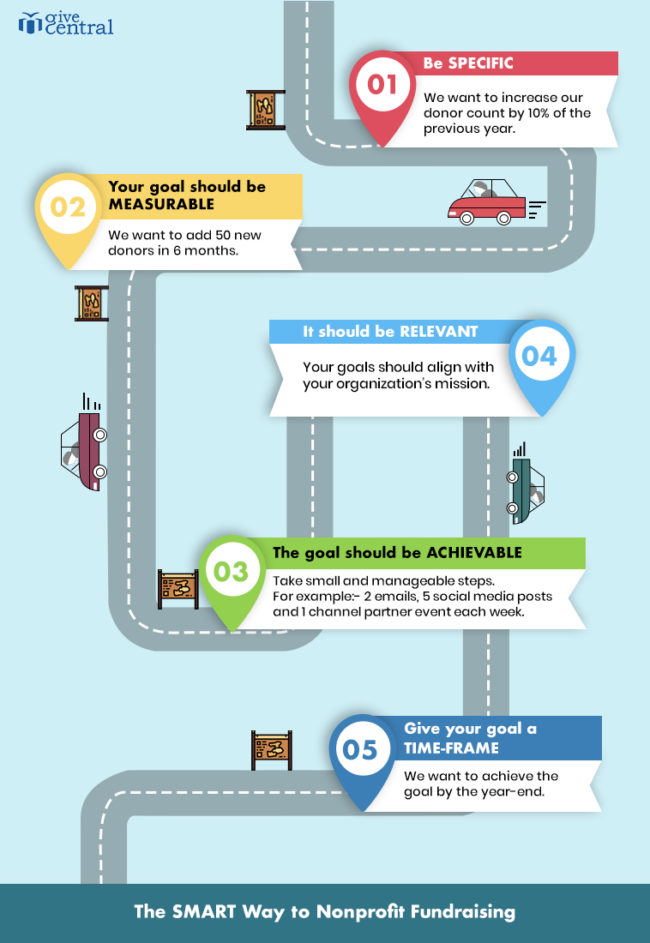Evaluating your fundraising goals is the way towards effective fundraising. Fundraising for nonprofits should be based on a framework that provides direction instead of indistinct goal-settings. For goals to remain relevant and produce results, include SMART in your fundraising goals. SMART goals are:
- Specific
- Measurable
- Achievable
- Relevant
- Time-bound.
Goals written in this format help teams understand what they are trying to achieve – plus the how and when.
Specific
Vague goals without a specific target do not give clarity and eventually do not convert into results. One way of stating a goal can be – “our goal is to grow donors and increase donations.” Does the goal statement provide an assertive answer to the question – “how many”?
The other way of defining your goal is by putting it in explicit terms. A better way of expressing the above goal can be – “we want to increase our donor list by 10% over the previous year”. Assigning the exact values leads to better performance and better results.
Measurable
Your goals should be quantifiable. It is important to remember that the goals should be measured so that you can determine whether your overall goal was a success or a failure. It is not necessary that the result is measured in numeric scale, but should be quantified in some sense so that you get a clear answer to whether you achieved your goals in terms of yes or no. For example, if you want to increase the number of downloads of an ebook your team created, setting the goal as 25 downloads can help you focus and keep a track of your efforts.

Achievable
Often nonprofits end up setting goals beyond reach. You might not be able to accomplish targets within a month with the given resources that will ideally require a year to achieve. Such goals may seem to be inspiring and may often inspire management and donors alike. But if the goals are beyond reach, achieving them in the said period of time is beyond possibility. This will eventually build up frustration or burnout.
Relevant
While setting goals, nonprofits should refrain from creating goals that are not relevant to their larger vision. Ensure that your campaigns and fundraising events contribute to the overall mission of your organization in some way. Some easy fundraising ideas that you have had success with in the past, can be far more rewarding than a fancy, but irrelevant new campaign.
Time-bound
Choose a time-frame within which you want to achieve your fundraising goals. This will help you stay motivated. For instance, if you want to add 50 new donors to your nonprofit, you may achieve it within the next 5 years or by leaving it to the course of time. This does not translate to accomplishing goals. For productive results in nonprofit fundraising, you need to stipulate a deadline not too far in the future for undemanding tasks and not too short for complex ones.
Setting SMART goals is of great importance to nonprofits who are constrained for valuable resources most of the year. Now that you have all the information you need, try defining your own goals and objectives.
If you’re ready to move to the next phase, leave us a comment to learn how GiveCentral can help.
easy fundraising ideas Fundraising for Nonprofits fundraising goal nonprofit fundraising
Last modified: April 17, 2025

















